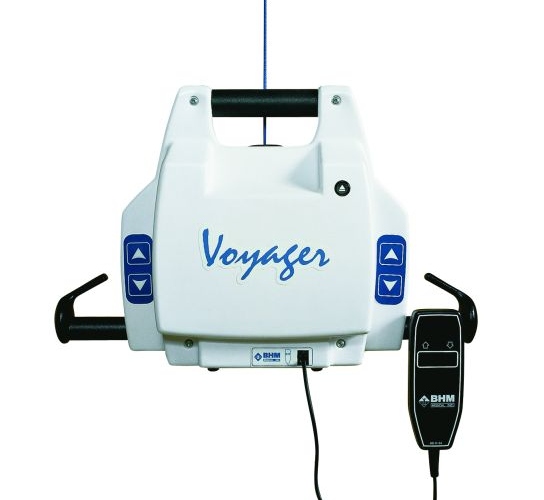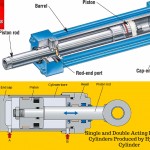Hoists are a boon to both the disabled and to their carers. The range of models enables quality care and hygiene whether at home, in a care environment, or even on the road.
For disabled people it not only means access to the vital areas of their apartments but the same or similar portable equipment can help them maintain their life in the wider world – go on holiday with family or take a dip in a pool. Lifts are even in use helping disabled people go horse riding.
For carers, they provide protection from the chronic injuries that are often the consequence of manual lifting. The statistics for lost work days due to strain injuries among nursing staff are very high and also very costly. Lifts are a very sound investment.
Portable or ceiling-mounted
The same lifting mechanism can often be attached both to permanent rails and to a portable rig, with power transmitted through an easily recharged integral battery. Lightweight aluminium frames enable easy transport and re-erection in as little as five minutes.
For permanent purposes such as in clinical settings ceiling rails make sense. They’re also appropriate for housebound people simply needing a fixed track between the bed and bathroom. Fixed tracks keep floors uncluttered and can more easily navigate winding routes.
Help with costs
The cost of a Voyager ceiling hoist is by no means prohibitive either for a nursing home or domestic installation. Many individuals qualify for a “Disabled Facilities Grant” towards the cost. From an NHS perspective, hoists make it possible for disabled people to stay in their homes relieving struggling nursing homes and hospitals. Enquire about grants through the government website at gov.uk.

Choosing the hoist
The first consideration is weight. All Voyager lifts are powerful but you must allow a margin of safety so consult your expert supplier. As a guide, the Voyager 420 can lift up to 30 stone (190 kg), the Voyager 550 39 stone (250 kg) and the Voyager 800 56 stone (360 kg).
Some models offer controls suitable for self-operation, but others may require a care assistant in attendance. A ‘2-way’ system has vertical lifting but not horizontal so requires an assistant to push the patient to the required location. If you’re equipping a person for independent movement a ‘4-way’system provides both vertical and horizontal movement.
All Voyager ceiling hoist models permit lifting from both seated and lying positions and can be used simply to make a recumbent person more comfortable.
Installation
Secure attachment of permanent rails is crucial for safety so shouldn’t be a DIY job. Experienced engineers can also advise which routes are practical when they involve turning corners and can install rails through doorways without compromising weight bearing lintels.
Everyone will benefit
Few devices deliver better returns on investment – patients are given back a dignified and more varied life, helpers are protected from strain and injury, and state systems are relieved of their overcrowding.










Comments are closed.